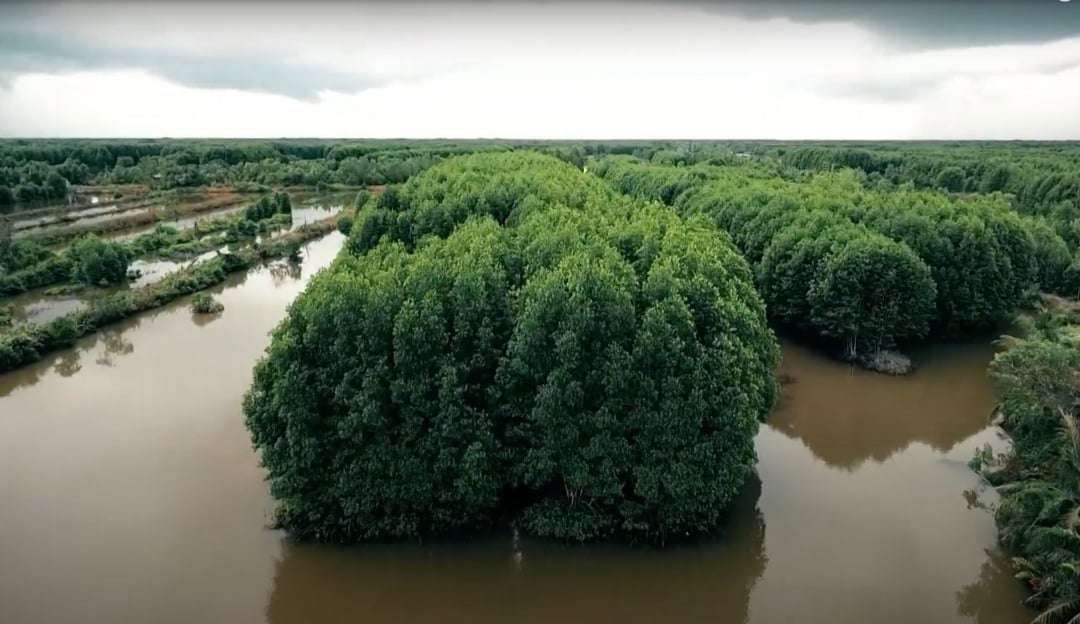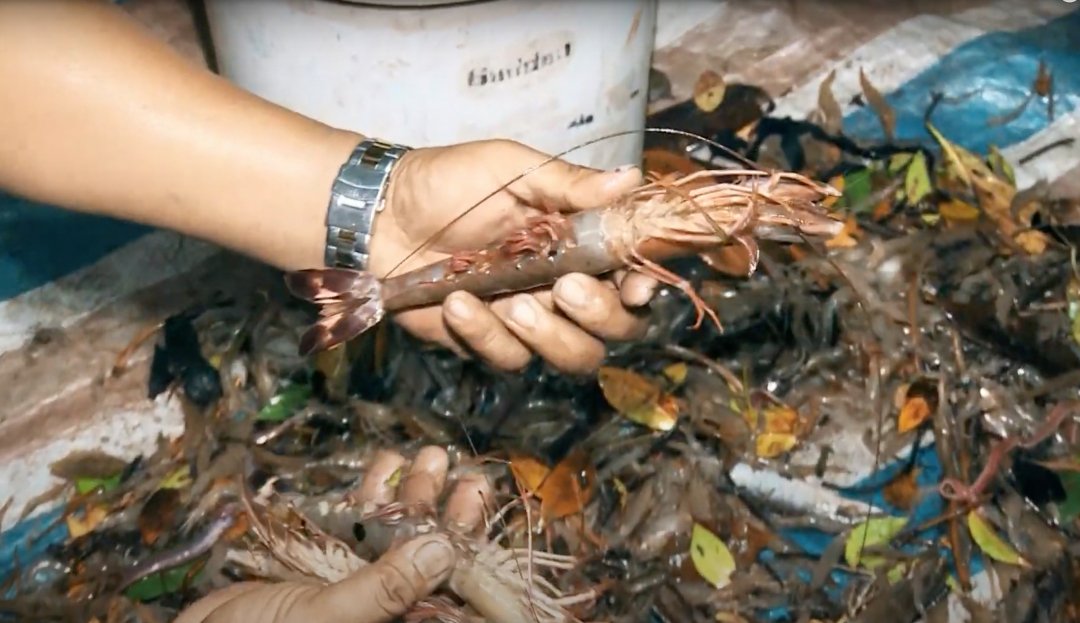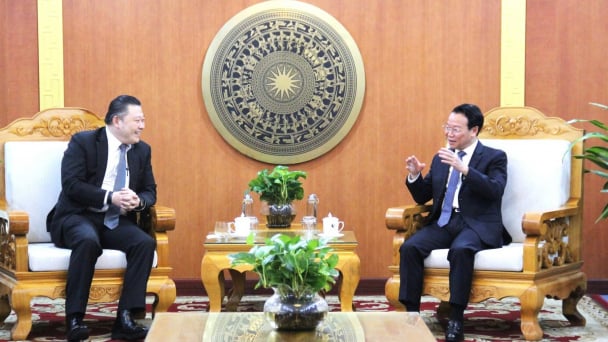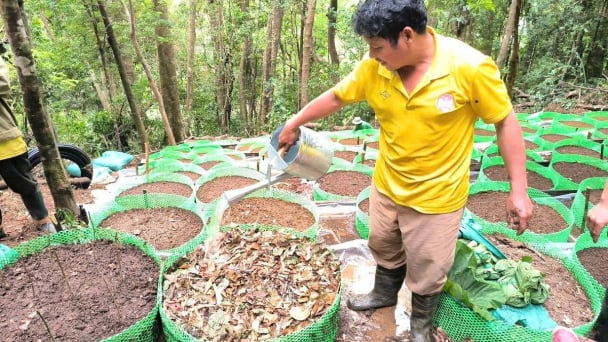May 19, 2025 | 03:10 GMT +7
May 19, 2025 | 03:10 GMT +7
Hotline: 0913.378.918
May 19, 2025 | 03:10 GMT +7
Hotline: 0913.378.918
These are the methods that many provinces in the Mekong Delta are implementing to develop a sustainable shrimp industry.
Cape Land shrimp product hits US$1 billion
Shrimp farming has been one of the pillars for the economy of Ca Mau province with a total cultivation area of 280,000 hectares and it is also the development orientation which the Cape Land aims at.
The products that make up the brand for Ca Mau shrimp are shrimps farmed in the mangrove forests and in the rice fields. In which, the area of shrimp-forest farming model is 80,000 hectares and the area of shrimp-rice farming model is 40,000 hectares. Deputy Director of Ca Mau Department of Agricultural and Rural Development, Chau Cong Bang shared: “These are the models of eco and organic shrimp farming with high economic value”. In addition, Ca Mau province has 8,500 hectares of intensive shrimp farming including 2,300 hectares of super-intensive shrimp farming.

Ca Mau takes the leading position in Vietnam in shrimp farming with 280,000ha of which 80,000ha are for cultivating shrimps in mangrove forests.
Particularly in 2020, the total seafood production of Ca Mau province reached 600,000 tons including 210,000 tons of shrimp. Shrimp export turnover in 2020 was over US$ 900 million.
Ca Mau province expects this year’s total shrimp production will reach 215,000 tons of which the production in the first six months of the year reached 103,000 tons, up 10.4% compared to the same period last year. Shrimp export value also increased by 23% over the same period last year. It’s expected that by the end of 2021, Ca Mau province’s shrimp export value will top US$1 billion.
By 2025, Ca Mau expects the province’s total shrimp production will reach 700,000 tons and shrimp export value will hit US$1.4 billion. By 2030, the export value will reach US$1.650 billion.
To achieve the goals, Ca Mau province is making its efforts to organize the production. Currently, the province has 230 groups and cooperatives (mainly shrimp farming groups and cooperatives). They will play an important role in developing multi-billion dollar shrimp industry.
Currently, the value chains of shrimp-forest cultivation model is showing its efficiency thanks to the participation of Minh Phu Seafood Group – the leading enterprises in processing and exporting shrimp, and some large enterprises as pioneers.
Shrimp-forest cultivation model linked farming areas with the area of about 20,000 hectares, building brand and gaining international certifications. Specifically, according to Chau Cong Bang, the fact that Ca Mau shrimp achieved international certifications has helped exporters conquering demanding markets.
However, for the remaining 200,000 hectares of shrimp cultivation in the province, building brand and developing value chains still face difficulties and are ineffective. Many contracts were broken when prices of shrimp went up and down in the market even they were signed by enterprises and farmer earlier.
“The Provincial People’s Committee has directed the Department of Agriculture and Rural Development to coordinate with two well-known enterprises including Minh Phu Seafood Group and Loc Troi Joint Stock Company to develop the value chain for shrimp-rice farming model. The province reported to the Ministry of Agricultural and Rural Development for drastically conducting the plan,” Bang added. In 2021, the province will strive for developing three or four high-efficient shrimp-rice farming models. Then, the province will base on the results to replicate the model.

Ca Mau mangrove shrimp brand is getting popular with international consumers.
According to a report by Ca Mau Provincial Department of Agriculture and Rural Development, the province's super-intensive shrimp farming area reached 2,932ha with 2,932 farming households. This is a hi-tech shrimp farming model. Over the time, the model has proved its efficiency when shrimp survival rate is 70-80% and the productivity is from 40-50 tons per hectare per crop (calculated on water surface area of aquaculture ponds)
According to the Department of Agriculture and Rural Development of Ben Tre province, in the 2021-2025 period, the province will strive for having 4,000 hectares of high-tech brackish water shrimp farming. These are key projects defined in the Resolution of the 11th provincial Party Congress (tenure 2021-2025).
In the first six months of 2021, the province has 1,950 hectares of high-tech brackish water shrimp cultivation with average productivity of 70-80 tons/ha/crop; thereby bringing high productivity and efficiency
In order to ensure disease prevention and control, Ben Tre Provincial People’s Committee allocates annual fund to conduct aquatic animal disease prevention and control and surveillance. On that basis, authorities recommend farmers to take measures for protecting shrimps’ health in their farms
By May 2021, Ben Tre province has 63 shrimp nurseries with a capacity of 15 billion post-larvae per year. The quantity of brackish water shrimp seeds exported outside the province reached more than 800 million. The number of marine shrimp seeds imported to the province under control was 382 million.
In order control the quality of shrimp seeds, Ben Tre Provincial People’s Committee has assigned the inter-agency task forces to strengthen inspection of the seed quality, especially the imported seeds. As for shrimp seeds produced in the local nurseries, the task forces will strengthen inspection of conditions at facilities to ensure the quality of shrimp seeds.
Translated by Mai Tham

(VAN) Minister of Agriculture and Environment Do Duc Duy held a meeting with Soopakij Chearavanont, Chairman of C.P. Group, on May 15.
/2025/05/16/3800-0-nongnghiep-143756.jpg)
(VAN) Suntory PepsiCo Vietnam coordinated with the Ministry of Education and Training to implement an education program on water conservation, reaching nearly 1 million primary school students nationwide.

(VAN) Vietnam’s TH Group officially put its high-tech fresh milk processing plant into operation in the Russian Federation, marking a historic moment as the first TH true MILK cartons were produced in Russia.

(VAN) Use of high-quality broodstock and biotechnology is regarded as the most effective approach to ensuring sustainable and economically viable shrimp aquaculture ahead of climate change and the emergence of increasingly intricate disease patterns.

(VAN) Carbon farming is a form of agricultural practices that helps absorb more greenhouse gases than it emits, through smart management of soil, crops, and livestock.

(VAN) This is a key content of the Memorandum of Understanding recently signed between the Vietnam Fisheries Society and Kunihiro Inc of Japan.

(VAN) To achieve the goal, local authorities and businesses in Kon Tum province have fully prepared the necessary conditions for the new Ngoc Linh ginseng planting season.